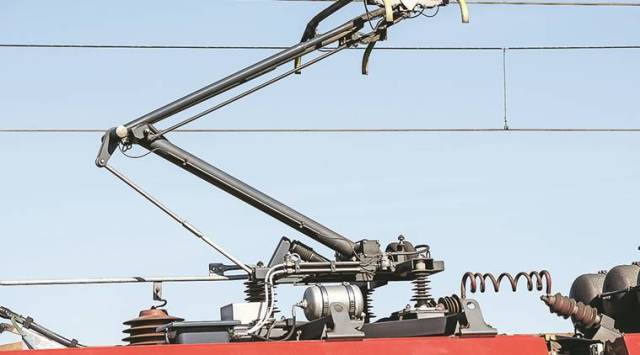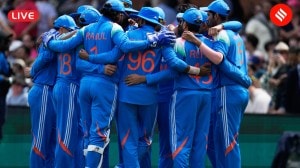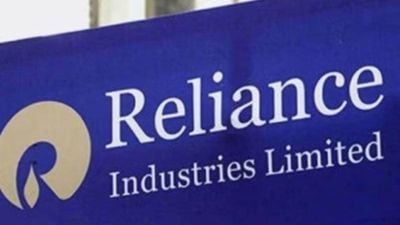Big milestone for Railways as it achieves 100 per cent electrification in Uttar Pradesh
About 143 MW of solar plants (both on rooftops and on land) and about 103 MW of wind power plants have been commissioned. In addition about 2,150 MW of renewable energy capacity has also been tied up, as per official data.
 The Railways is working on a target of 100 per cent electrification of all its broad gauge routes an so far it has achieved around 85 per cent progress. (Express Photo)
The Railways is working on a target of 100 per cent electrification of all its broad gauge routes an so far it has achieved around 85 per cent progress. (Express Photo) In its bid to make the country’s entire rail network run on electric traction and shun diesel-based trains, the Indian Railways on Tuesday achieved an important milestone by electrifying all the routes in Uttar Pradesh, even as it embarks on a journey to become a “Net Zero Carbon Emission” railway system in another seven years.
With the electrification of the 85-km Shubhagpur-Pachperwa section in Gorakhpur-based North Eastern Railway, the entire railway lines in the state now stand electrified and joins East Coast Railway, North Central Railway, West Central Railway, Eastern Railway and South Eastern Railway, which are completely electrified. The Railways is working on a target of 100 per cent electrification of all its broad gauge routes an so far it has achieved around 85 per cent progress.
This is in tandem with Indian Railway’s ambitious aim to reduce its carbon footprint to achieve ‘Net-zero Carbon Emission’ by 2030.
Progressively, the Railways also has plans to shift to renewables, dovetailing to India’s global commitment to renewable energy as part of various international ‘climate’ negotiations. The projected energy demand of the Railways in 2029-30 is expected to be about 8,200 megawatts (MW). To achieve Net Zero Carbon Emission, expected requirement of renewable capacity by 2029-30 would be about 30,000 MW, officials said.
About 143 MW of solar plants (both on rooftops and on land) and about 103 MW of wind power plants have been commissioned. In addition about 2,150 MW of renewable energy capacity has also been tied up, as per official data.
A few years ago, railway engineers had also toyed with the idea of solar-powered trains.
However, the findings indicated that solar power, working only during day time, generates battery backup of approximately four to five hours. It was also found that the system does not work properly during fog/rain and winter season and battery backup goes down to two to three hours depending upon weather conditions. In light of these, the project was not pursued further.
However, Railways will continue to maintain a fleet of around 2,000 diesel locomotives, accounting for contingencies and such needs.







